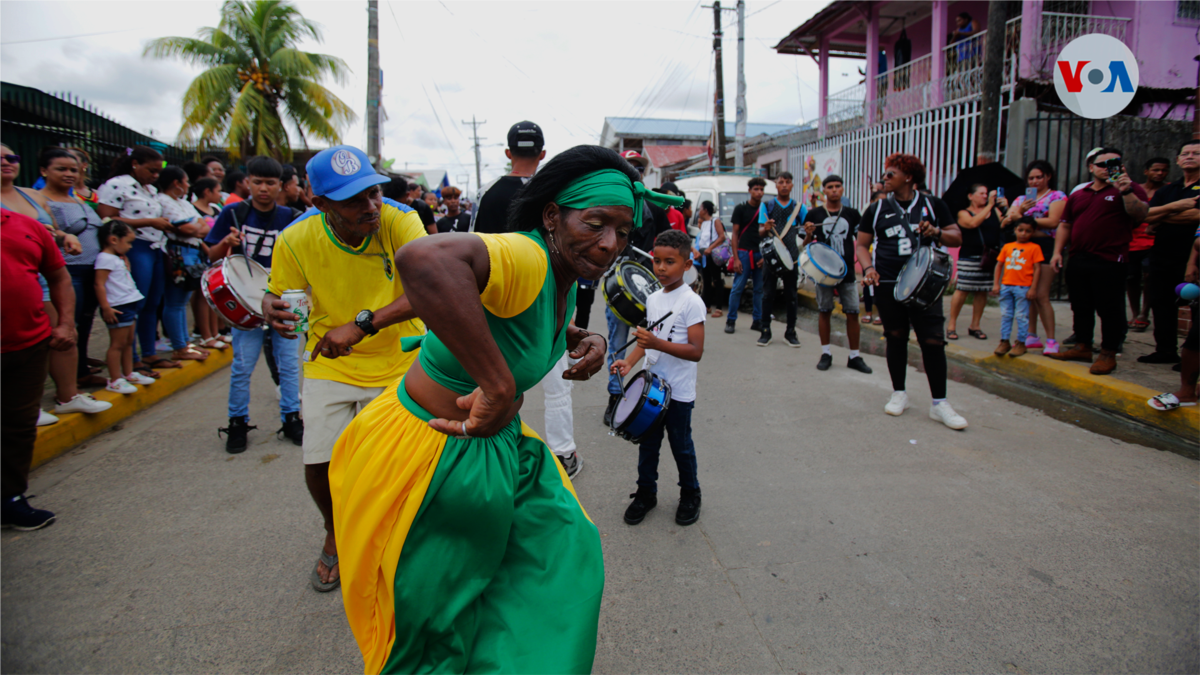For Ashley Shandell Clark, a 31-year-old woman, the Palo de Mayo festivities are more than just a cultural celebration. During those days, she generates income that helps her cope with the precarious situation that she suffers as an unemployed person.
Clark is originally from Bluefields, the city located in the southern Caribbean of Nicaragua where the colorful Palo de Mayo festivities are celebrated since the beginning of May.
She earns money making braids that adorn the hair of the “coastal” women who participate in the cultural events that are scheduled during these dates. For each of these braids or “canga”, as these hairstyles are also known, she earns between 400 and 600 córdobas, equivalent to between 11 and 15 dollars.
“This represents a source of income for me since I’m a single mother and I don’t have a job,” Clark told the Voice of America.
The Palo de Mayo festivities are held in Bluefields throughout the month of May. According to historians, its origin dates back to 1633, during the period of English colonization and the arrival of black slaves from Africa.
It is not until the last weekend of May that the traditional and massive parade of troupes and floats from the neighborhoods takes place, including the old Tulululu Dance. The Queen of the Palo de Mayo is also crowned every year.
This celebration is a custom adapted from the English tradition, in which the natives included all the instruments that could sound with rhythm and then incorporated their own songs.
Although there is no clarity regarding the origin and meaning of the Palo de Mayo dance, the inhabitants are proud of this festival that they see as a privilege and the possibility of showing their culture, he explained to the VOABridgitte Amelia de Souza Amir, a 57-year-old sociologist, originally from Bluefields.
The sociologist indicates that originally the first of May was the central activity of the Maypole, and “that’s how it supposedly began in England but, here, it was never just one day. It started in one week, then it extended to two weeks and, currently , as since the eighties, more or less, it is celebrated the whole month”.
A rite of sowing
The locals consider the tradition of the Palo de Mayo as a rite to promote planting and in order to achieve a rich and abundant production in the harvest of their key crops for food and subsistence.
Sociologist Bridgitte Amelia de Souza points out that the Maypole tradition generally occurred in neighborhoods where black people lived and they placed trees with fruit around or tied to it. Later they danced.
“That tree does not bear fruit, but it is a way of thanking the fertility of the Earth. In the Palo de Mayo it is about gratitude,” explains the expert.
After the triumph of the Sandinista revolution in the 1980s, the government began to promote this event more in the Caribbean, says the sociologist, although she regrets that this led to a “misrepresentation” of the meaning it represented for them.
“There is always a group that tends to include too much liquor and misrepresent what dance is. The Palo de Mayo was a challenge from the man to the woman to see who could dance the best. Only the best entered, it was not all the people. The The rest were spectators and that is why the couples enter, but not necessarily all the couples”.
Connect with the Voice of America! Subscribe to our channel Youtube and activate notifications, or follow us on social networks: Facebook, Twitter and Instagram.

















